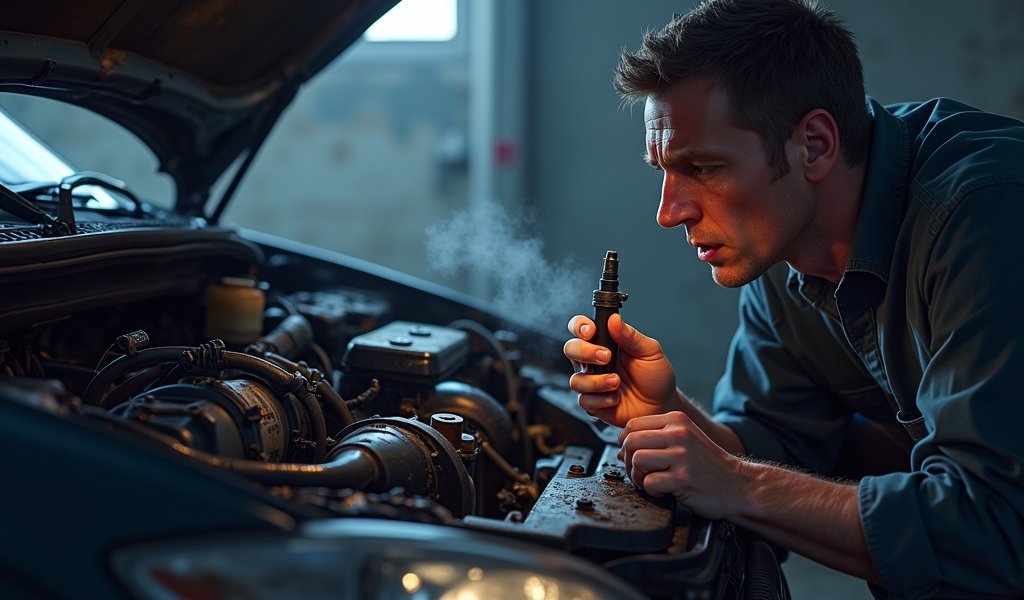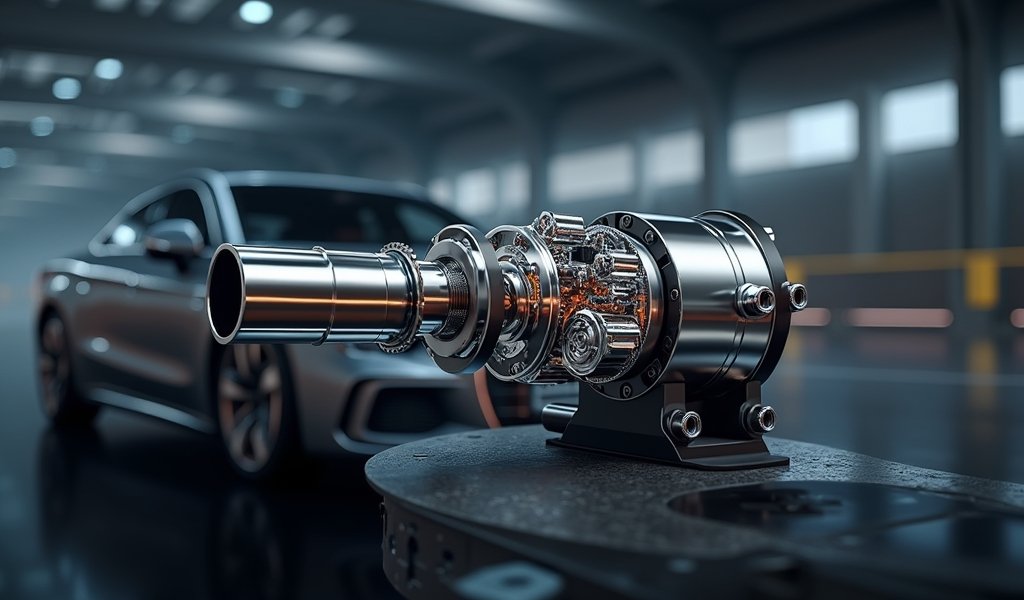Overview
This article explains how the common rail pressure sensor works in diesel engines and provides five practical fixes for sensor issues: cleaning the sensor, replacing it, repairing wiring, addressing fuel quality problems, and updating ECU software. The guide also covers symptoms of sensor failure including rough idling and poor acceleration, preventative maintenance tips, and when professional help should be sought instead of DIY repairs.
Table of Contents
- Understanding Common Rail Pressure Sensors
- Symptoms of a Failing Rail Pressure Sensor
- Top 5 Fixes for Common Rail Pressure Sensor Issues
- Fix #1: Cleaning the Sensor
- Fix #2: Replacing the Sensor
- Fix #3: Checking and Repairing Wiring
- Fix #4: Addressing Fuel Quality Issues
- Fix #5: Updating the ECU Software
- Preventative Maintenance Tips
- When to Seek Professional Help
- Conclusion
- Frequently Asked Questions
Understanding Common Rail Pressure Sensors
The common rail pressure sensor is the unsung hero of modern diesel engines. Think of it as the guardian that constantly monitors fuel pressure in your vehicle’s common rail system, ensuring your engine receives precisely the right amount of fuel at the perfect pressure. Without this little component working properly, your diesel engine would be like a musician playing out of tune – technically making noise, but not performing as intended.
Located on the fuel rail, this sensor transmits real-time data to your engine’s Electronic Control Unit (ECU). The ECU uses this information to make split-second adjustments to fuel delivery, timing, and injection pressure. It’s a delicate dance that happens thousands of times per minute, all to keep your engine running smoothly, efficiently, and with optimal power.
Modern diesel engines rely on incredibly precise fuel pressures – often exceeding 30,000 psi in newer models. At these extreme pressures, even small deviations can impact performance dramatically. That’s why the common rail pressure sensor is so critical; it helps maintain the balance between power, efficiency, and emissions control.
Symptoms of a Failing Rail Pressure Sensor
When your common rail pressure sensor starts to falter, your vehicle will usually give you some not-so-subtle hints. The most obvious sign is often the dreaded check engine light illuminating your dashboard. This warning shouldn’t be ignored, as it could be your first indication of pressure sensor troubles.
If you’re experiencing rough idling – where your engine seems to stutter or shake when the vehicle is stationary – this could be another telltale sign. It’s like your engine has had too much coffee; it can’t settle down into a smooth rhythm. This happens because improper fuel pressure disrupts the carefully calibrated fuel delivery sequence.
Poor acceleration is another common symptom. You might notice your vehicle feels sluggish or unresponsive when you press the gas pedal, almost like it’s dragging a heavy load even when it isn’t. This occurs because the engine isn’t receiving the correct fuel pressure needed for optimal performance.
Reduced fuel economy often accompanies sensor issues. You might find yourself visiting the pump more frequently as your manifold absolute pressure readings and fuel pressure readings become inaccurate, causing the engine to use fuel inefficiently.
Perhaps most concerning is erratic engine behavior, including stalling or sudden power loss. These symptoms can be particularly dangerous if they occur while driving at higher speeds or in heavy traffic. According to fuel injection specialists, pressure sensor failures account for approximately 15% of common rail system malfunctions in modern diesel engines.

Top 5 Fixes for Common Rail Pressure Sensor Issues
When dealing with common rail pressure sensor problems, having a systematic approach can save you time, money, and frustration. I’ve spent years helping drivers tackle these issues, and I’ve narrowed down the most effective solutions to five key fixes. Each approach addresses different aspects of sensor problems, from simple maintenance to more complex repairs.
Before diving into these fixes, remember that modern diesel engines are sophisticated systems. While many sensor issues can be resolved with DIY methods, always respect your limits and don’t hesitate to consult a professional if you’re uncertain. That said, let’s explore the top five fixes that have helped countless drivers restore their vehicles to peak performance.
Fix #1: Cleaning the Sensor
Sometimes the simplest solution is the most effective. A dirty or contaminated common rail pressure sensor can send inaccurate readings to your ECU, causing all sorts of performance issues. Before replacing any parts, try cleaning the sensor first – it’s like washing your glasses when they get smudgy rather than buying a new pair.
Start by locating the sensor on the fuel rail – usually it’s a small component with an electrical connector attached. Ensure your engine is cool and the vehicle’s battery is disconnected before beginning any work. Safety first, folks!
Once you’ve found the sensor, carefully disconnect the electrical connector by pressing the tab and gently pulling it away. Using the proper socket size, remove the sensor from the rail. Be prepared for some fuel spillage – have rags handy to catch any drips.
For cleaning, use only electronic parts cleaner or isopropyl alcohol (90% or higher) – never use harsh chemicals or abrasives that could damage the sensor’s sensitive components. Spray the cleaner onto a soft, lint-free cloth rather than directly onto the sensor, then gently wipe away any visible contaminants from the sensor tip and body.
Pay special attention to the sensor tip and electrical contacts, but be gentle – these components are delicate. Allow the sensor to dry completely before reinstallation, which should be done carefully following the reverse order of removal. Proper torque is crucial here – over-tightening can damage both the sensor and the rail.
Fix #2: Replacing the Sensor
When cleaning doesn’t resolve the issue, replacement becomes the next logical step. Think of it as changing a burned-out lightbulb – sometimes components simply reach the end of their service life. Common rail pressure sensors typically last between 80,000 and 120,000 miles, though this varies by vehicle make and driving conditions.
Always purchase the correct replacement sensor for your specific vehicle. Using the wrong sensor is like trying to fit a square peg in a round hole – it simply won’t work properly. Your vehicle’s service manual or a quick search with your VIN number can help identify the exact part needed.
The replacement procedure mirrors the removal process described in the cleaning section. After disconnecting the battery and locating the sensor, remove it carefully, being mindful of any fuel that might escape. Install the new sensor hand-tight initially, then use a torque wrench to achieve the manufacturer-specified tightness.
Before reconnecting the electrical connector, inspect it for any damage or corrosion. If the connector shows signs of wear, it may need replacement as well – a perfect electrical connection is essential for accurate sensor readings. Once everything is properly connected, reconnect the battery and clear any error codes using an OBD-II scanner.
After replacement, your vehicle might need a short adaptation period as the ECU adjusts to the new sensor’s readings. Don’t be alarmed if performance seems slightly different for the first few miles – this is normal as the system calibrates. Research from automotive engineering studies shows that proper sensor calibration can improve fuel efficiency by up to 3-5% compared to malfunctioning sensors.
Fix #3: Checking and Repairing Wiring
Sometimes the sensor itself isn’t the culprit – it’s the wiring that connects it to the ECU. Electrical issues can be tricky to diagnose, but addressing them properly can save you from unnecessarily replacing a perfectly good sensor. It’s like troubleshooting a lamp that won’t turn on; checking the cord and plug before replacing the bulb often solves the problem.
Begin your inspection at the sensor connector. Look for obvious signs of damage like frayed wires, bent pins, corrosion, or loose connections. Even small issues here can cause big problems with sensor readings. Gently tug on the wiring to ensure it’s secure within the connector housing.
Next, trace the wiring harness from the sensor toward the ECU, looking for any signs of wear, chafing against engine components, or heat damage. Engine vibration and heat can gradually damage wiring insulation, creating short circuits or intermittent connections that are particularly difficult to diagnose.
For a more thorough check, use a multimeter to test for continuity in each wire running from the sensor connector to the ECU connector. This verifies that electricity can flow properly through each wire. You should also check for proper resistance values according to your vehicle’s service manual – incorrect resistance can cause sensor reading errors.
If you discover wiring issues, repair them using proper automotive-grade wire and connectors. Avoid temporary fixes like electrical tape, which will quickly degrade in the harsh engine environment. Heat-shrink connections and properly routed wiring will ensure long-lasting repairs. After any wiring repair, use dielectric grease on connections to prevent future corrosion.
Fix #4: Addressing Fuel Quality Issues
Poor quality fuel can wreak havoc on your common rail pressure sensor and the entire fuel system. It’s like trying to run a marathon after eating nothing but junk food – your body (or in this case, your engine) simply can’t perform at its best without proper nutrition.
Start by replacing your fuel filter according to the recommended schedule. A clogged filter restricts fuel flow, causing pressure fluctuations that can trigger sensor errors. Most vehicles need filter replacements every 15,000-30,000 miles, but diesel engines in dusty environments may require more frequent service.
Consider adding a quality diesel fuel additive designed to clean injectors and improve fuel quality. These additives can help remove deposits throughout the fuel system, including on the sensor itself. Use these products as directed – more isn’t always better when it comes to additives.
If you suspect contaminated fuel, draining the tank might be necessary. While this is a more involved procedure, removing water or other contaminants from your fuel system can prevent serious damage to your common rail components. Some modern vehicles have water separators in their fuel systems that should be drained periodically.
Going forward, be selective about where you purchase fuel. Established stations with high turnover typically have fresher, cleaner fuel. If you’ve been experiencing recurring sensor issues, keeping a fuel log to track which stations correlate with better engine performance might help identify problematic fuel sources.

Fix #5: Updating the ECU Software
Just like your smartphone performs better after a software update, your vehicle’s ECU may need occasional updates to properly interpret pressure sensor data. Manufacturers periodically release software updates that improve sensor communication, adjust pressure parameters, and fix known issues in the fuel management system.
These updates (sometimes called flash updates or reflashing) can often resolve pressure sensor problems without any physical repairs. They’re particularly effective for addressing issues like rough idling, poor fuel economy, or error codes that persist even after sensor replacement.
While some newer vehicles can receive wireless updates, most require a visit to the dealership or a specialized automotive shop with the appropriate diagnostic equipment. Some aftermarket OBD-II tools can perform ECU updates, but verify compatibility with your specific vehicle before attempting this route.
Be cautious about non-factory ECU tunes or modifications. While performance tunes can increase power and efficiency, they may also alter fuel pressure parameters beyond what your system was designed to handle, potentially causing sensor issues or even damage to expensive components like fuel injectors.
If you’ve recently had other engine work performed, an ECU reset might be necessary to clear adaptive memory. This process allows the ECU to relearn optimal fuel delivery parameters based on the current condition of all components, including your common rail pressure sensor.
Preventative Maintenance Tips
An ounce of prevention is worth a pound of cure, especially when it comes to your vehicle’s fuel system. Proper maintenance can significantly extend the life of your common rail pressure sensor and help you avoid the headaches of unexpected failures.
First and foremost, maintain a regular fuel system service schedule that includes timely filter changes and fuel system cleanings. Clean fuel is the lifeblood of your common rail system, and keeping contaminants at bay protects all components, including the pressure sensor.
Pay attention to your driving habits. Short trips where the engine never reaches full operating temperature can lead to condensation in the fuel system, potentially causing corrosion and sensor issues. Occasional longer drives help your engine reach optimal temperature and burn off accumulated moisture.
Consider using a fuel system cleaner designed specifically for diesel engines every few months. These products can help keep the entire fuel system clean, including the sensitive tip of the pressure sensor. Just be sure to use products recommended for your specific engine type.
When working on other engine components, be careful not to disturb the sensor wiring. It’s easy to accidentally damage electrical connections during other maintenance tasks. Taking an extra moment to secure wiring harnesses properly can prevent future headaches.
Lastly, address check engine lights promptly. Early intervention when sensor issues first develop can prevent cascade failures where one component damages others. Many auto parts stores offer free code reading services if you don’t own an OBD-II scanner yourself.
When to Seek Professional Help
While many common rail pressure sensor issues can be addressed by a dedicated DIYer, there are definitely times when calling in the professionals makes more sense. If you’ve tried the fixes outlined above and still experience problems, it may be time to hand over the wrench.
Complex diagnostic issues, particularly intermittent problems that come and go, often require specialized testing equipment that most home mechanics don’t possess. Professional scan tools can monitor sensor data in real-time during test drives, revealing patterns that basic code readers miss.
If your vehicle has multiple related codes—not just pressure sensor errors but also injector, rail pressure control, or other fuel system codes—this suggests a more systemic problem. These complex interactions often require professional diagnosis to avoid the costly “parts-throwing” approach of replacing components one by one.
Modern diesel engines operate at extremely high pressures, and improper repairs can lead to serious safety concerns. If you’re unsure about properly torquing components or bleeding the fuel system, professional assistance ensures the job is done safely and correctly.
Finally, warranty considerations may come into play. If your vehicle is still under warranty, DIY repairs could potentially void coverage for related components. In these cases, dealer service, though often more expensive upfront, protects your warranty and may save money long-term.
Conclusion
The common rail pressure sensor might be small in size, but its impact on your diesel engine’s performance is enormous. By understanding how this critical component works and recognizing the signs of trouble, you’re already ahead of most drivers on the road. Whether you’re dealing with rough idling, poor acceleration, or that dreaded check engine light, the five fixes we’ve explored provide a comprehensive approach to resolving most common rail pressure sensor issues.
Remember that proper maintenance is always easier and less expensive than repairs. Regular fuel system care, attention to fuel quality, and prompt addressing of warning signs can help your sensor—and your entire fuel system—perform reliably for many miles to come.
While DIY approaches can save money and provide satisfaction, don’t hesitate to seek professional help when needed. The sophisticated nature of modern diesel engines sometimes requires specialized knowledge and equipment that only trained technicians possess. At the end of the day, the goal is reliable, efficient performance from your vehicle, whether you achieve that through your own wrenching or with professional assistance.
By applying the knowledge and techniques shared in this guide, you’re well-equipped to handle common rail pressure sensor issues with confidence. Here’s to smoother running engines, better fuel economy, and many trouble-free miles ahead!
Frequently Asked Questions
How much does it cost to replace a common rail pressure sensor?
Replacement costs typically range from $150-$400 for parts and labor. DIY replacement can save on labor costs if you have the proper tools and knowledge.
Can I drive with a bad rail pressure sensor?
While possible in emergencies, it’s not recommended for regular driving. A faulty sensor can cause engine damage, reduced fuel efficiency, and potentially leave you stranded.
How long do common rail pressure sensors typically last?
Most sensors last between 80,000 and 120,000 miles under normal conditions. Regular maintenance and clean fuel can extend sensor lifespan considerably.
Will a bad pressure sensor always trigger a check engine light?
In most modern vehicles, yes, but not always immediately. Some vehicles may only trigger the light when readings fall outside programmed parameters for a certain duration.
Can weather conditions affect rail pressure sensor readings?
Extreme cold can sometimes cause temporary sensor issues due to fuel gelling or condensation. These typically resolve as the engine warms up and reaches normal operating temperature.

